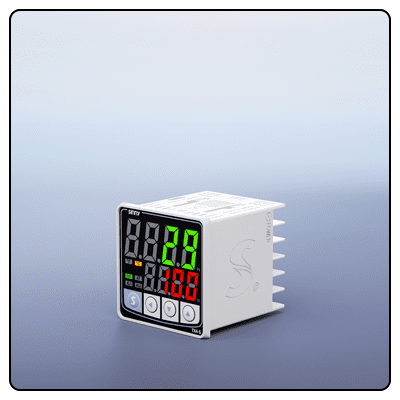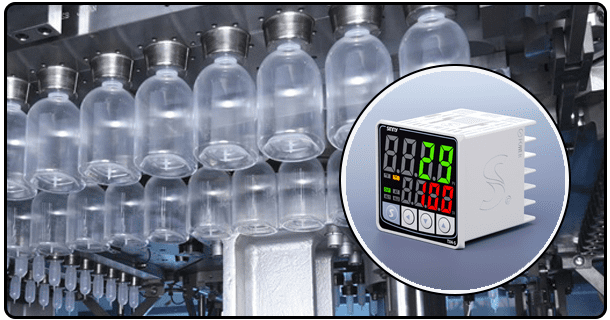Common Problems with Temperature Controllers and How to Solve Them
Discover common temperature controller issues and get practical strategies to address them with our comprehensive solution guide. Ensure optimum performance and accurate temperature regulation by reading up on our solutions!
1. Introduction
Temperature controllers are essential tools used across industries to keep processes running efficiently, yet these devices may encounter issues that impair their functionality. This article details common challenges associated with temperature controllers and practical solutions that may address them.
Temperature Controller Is Not Turning On
Possible Causes for This Could Include:
• Power supply issues.
• Faulty wiring or connections.
• Internal component failure.
Solutions:
* Check Power Supply:
Ensure the power source is stable and properly connected. Likewise, verify if its voltage meets controller specifications - sometimes, cycling power off/on may resolve an issue quickly.
* Inspect the Wiring:
Carefully inspect all wiring and connections for signs of damage or looseness, replacing damaged wires or repairing faulty wiring when necessary. Loose connections could often be to blame when controllers no longer function effectively.
* Replace Components:
If internal components become damaged, consider replacing them according to manufacturer recommendations for specific parts. In certain instances, it might be more cost-effective to change out your unit than to repair or upgrade completely.
2. Inaccurate Temperature Readings
Possible Causes:
• Sensor calibration drift.
• Incorrect sensor placement.
• Sensor degradation over time.
• Electrical interference.
Solutions:
* Re-calibrate Sensors:
Regularly re-calibrate temperature sensors according to manufacturer recommendations to maintain accurate readings, prevent drift, and maintain reliability. Calibration should form part of routine maintenance to minimize errors.
* Appropriate Sensor Placement: Ensure the sensor is correctly installed on and in contact with the monitored surface to avoid inaccurate readings; improper placement could result in erroneous readings - for instance, too close proximity to heat sources may affect readings incorrectly.
* Replace Degraded Sensors: Sensors can deteriorate over time and lose accuracy, so replacing them regularly with high-quality ones is necessary for precise measurements and lasting service. Investing in high-grade ones also extends their lifespan significantly.
* Minimize Interference: Shielded cables and proper grounding techniques can reduce electrical interference that interferes with sensor readings; keeping sensor cables away from high-powered devices is also beneficial in minimizing interference.
3. Temperature Fluctuations
Possible Causes:
• Malfunctioning heating or cooling elements.
• Inconsistent power supply.
• Controller settings not optimized.
Solutions:
* Check Heating/Cooling Elements:
Examine heating or cooling elements for any malfunction; repair or replace as necessary, if required, to help avoid unexpected failure. Regularly maintaining these elements may reduce unexpected breakdowns.
* Maintain a Stable Power Source:
Fluctuations in power can create temperature variations that result in malfunction. Having an efficient source can prevent temperature spikes. They are installing a voltage stabilizer and consistent power.
* Optimize Controller Settings:
Make adjustments to ensure the settings are ideal for your application and can maintain consistent temperatures throughout. I think that referring to your user manual may help you make this choice.
4. Error Messages on Controller Display
Possible Causes:
• Faulty sensors or wiring.
• Incorrect parameter settings.
• Software or firmware issues.
Solutions:
* Inspect Sensors and Wiring:
Before making any decisions on solutions, examine sensors and wiring closely for any signs of trouble or any defects, including replacing any defective parts to resolve error messages or simply reconnecting, which might work just as quickly in clearing an error code.
* Reset Parameters:
When error messages from your controller appear, often resetting its parameters back to factory settings can help resolve them. Before you start this step, please take precautionary steps, such as backing up all settings.
* Update Software/Firmware:
Ensure the controller's software or firmware is updated, which may resolve bugs and improve performance. You can check manufacturer websites to stay abreast of new updates.
5. Controller Not Responding to Commands
Possible Causes:
• Communication issues.
• Faulty control unit.
• Software glitches.
Solutions:
* Inspect Communication Cables and Connections:
To make sure all communication lines and connections are working optimally and do not threaten communications, check that any loose or damaged cables or connections have not become loose enough or disconnected, which could disrupt transmission.
* Replace Control Unit:
If the control unit has become inoperative, its replacement might be necessary. Consult with your manufacturer about compatible models; upgrading can often provide extra features and improved reliability.
* Execute Software Reset or Update:
A software reset can often solve glitches that prevent controllers from responding to commands, so make sure that you follow your manufacturer's instructions for performing one.
6. Conclusion
Preventative maintenance and troubleshooting of temperature controllers are crucial to their optimum operation to avoid downtime and ensure precise temperature regulation. Quick response times to common issues will help minimize downtime, while persistent ones should be addressed by reaching out directly to their manufacturer for professional assistance. By adhering to this guide's solutions, you can ensure your controllers operate effectively and reliably.
- Discover DIY Temperature Controller Projects for Beginners
- Case Studies on Advanced Temperature Controllers Improving Industrial Efficiency























